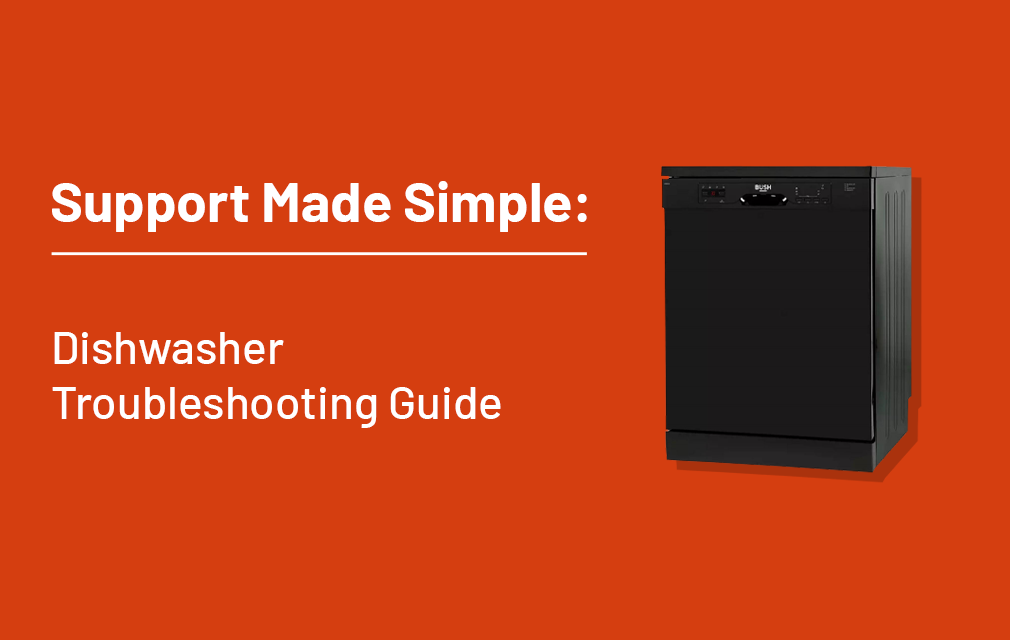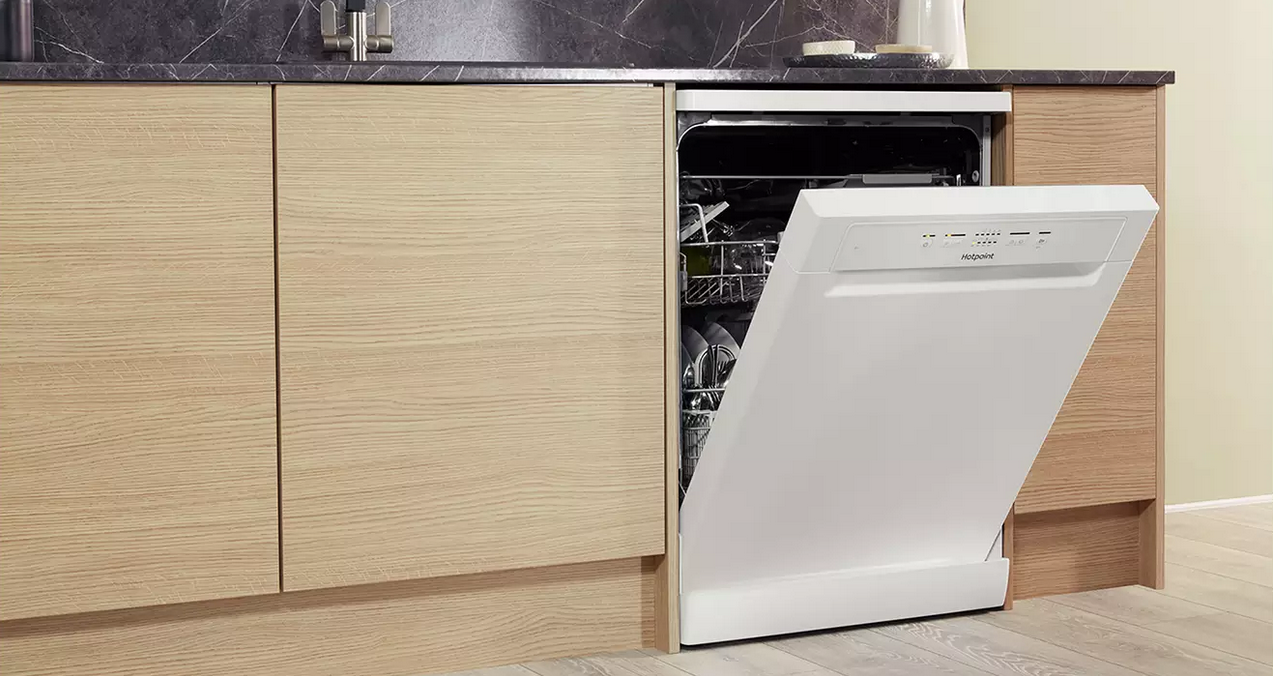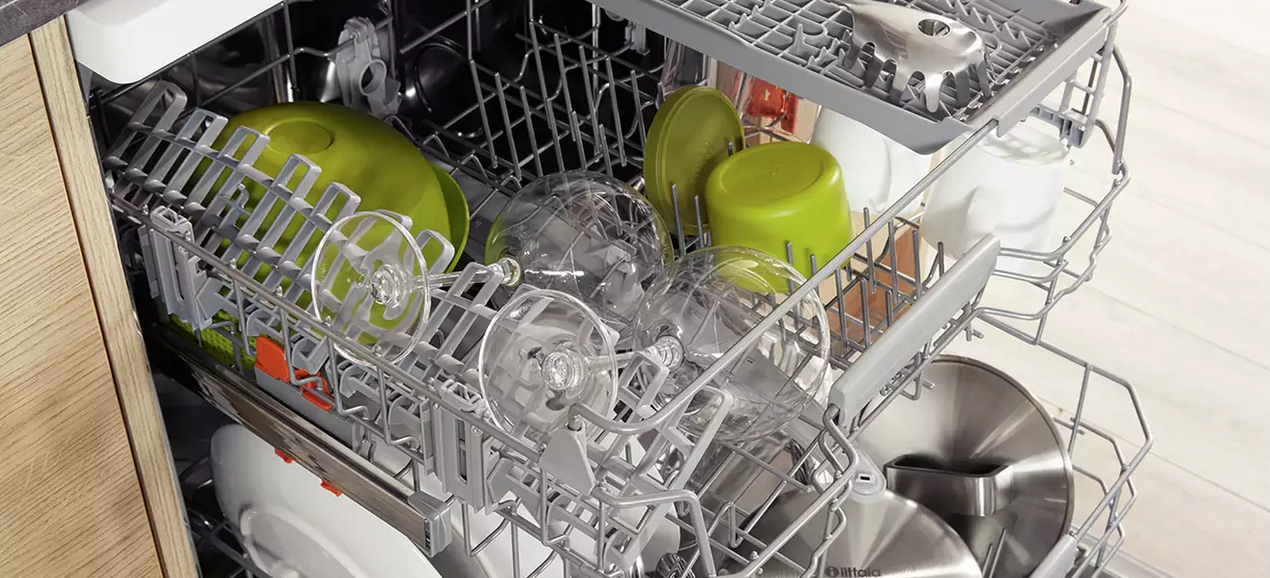
Dishwashers have helped to reduce the need to hand wash all our plates and cutlery. Whilst they offer great convenience, if you experience any issues with your appliance it can be frustrating. In this guide, we have highlighted common queries and solutions for dishwashers.
The dishwasher isn’t draining.
The drainage part of the dishwasher’s cycle is there to get the dirty water out of the appliance. If you finish a wash and find a puddle of water at the bottom, it is likely there is some sort of blockage preventing it from draining.
We recommend unscrewing the filter and checking the filter, and the filter housing, for any blockages. Food deposits can get caught in the filter which prevents the flow of water. Wash these off and remove the blockages to allow the appliance to drain.
If this doesn’t work, the other place to check is the drainage pipe. We recommend checking the pipe for any kinks/bends which could be restricting the water from draining. Straighten these connections to rectify.
If necessary, you can also try using a pipe cleaner or drainage snake to remove any blockages in the pipe itself.
The programme will not start.
If you are finding that the programme is not starting, we suggest checking that water is entering the appliance. If you cannot see this, you should check the inlet connection behind the machine under the sink for any bends. If you can see any obvious kinks or bends, try straightening these out to allow the water to flow as this may solve the issue.
If the water inlet looks fine and water should be flowing, the next thing to check would be to ensure the door has closed correctly. If the appliance detects the door is open, the programme will not start. You may need to push hard until you hear a click to confirm it is in place.

The tablet dispenser is not closing.
If you find the tablet dispenser isn’t closing, we would recommend checking the tablet that you are using. Not all tablets are suitable for all dishwashers due to the different sizes. You may need to opt for a slightly smaller tablet that will fit the dispenser better.
If it looks like it is the correct size, you should check the dispenser itself to ensure there is not any form of debris/blockage that could be preventing it from shutting.
There are water marks/food deposits left on dishes/cutlery.
Opening your dishwasher to find marks or food still on your dishes and cutlery can be disappointing. To prevent this, there are some simple things you can try.
Firstly, you’ll want to ensure that items placed in the dishwasher have been scraped of food/debris and rinsed off before placing inside. This is because the flow of water isn’t strong enough to remove hard, stubborn dirt.
You’ll also want to check that the salt and rinse aid is topped up to help the flow of water and avoid streaky marks from being left.
As well as this, any items placed inside should be organised to keep space between them to allow the water to flow. If too tightly packed together, the water will not be able to effectively clean all the items.

The spray arms are not moving.
The spray arms are important for the dishwasher as they spray the dishes to clean them. If you’re finding they’re not moving, this can really affect the cleaning results. To solve this, you should remove them from the appliance and clean them as per your user manual guidance. Generally, they can be cleaned under the sink to remove dirt and debris. Once cleaned, refit into place and try spinning manually by hand to check that they can spin.
The door is springing shut.
You may find the door is springing shut if you have an integrated dishwasher and you have not fully installed the door. The cupboard door must be correctly installed first otherwise the door will not operate correctly and will spring up quickly.
Have any more questions? Don’t worry, you can visit the Argos Support Site and search your catalogue number to find more guidance for your specific model.
For more articles on dishwashers, see below: